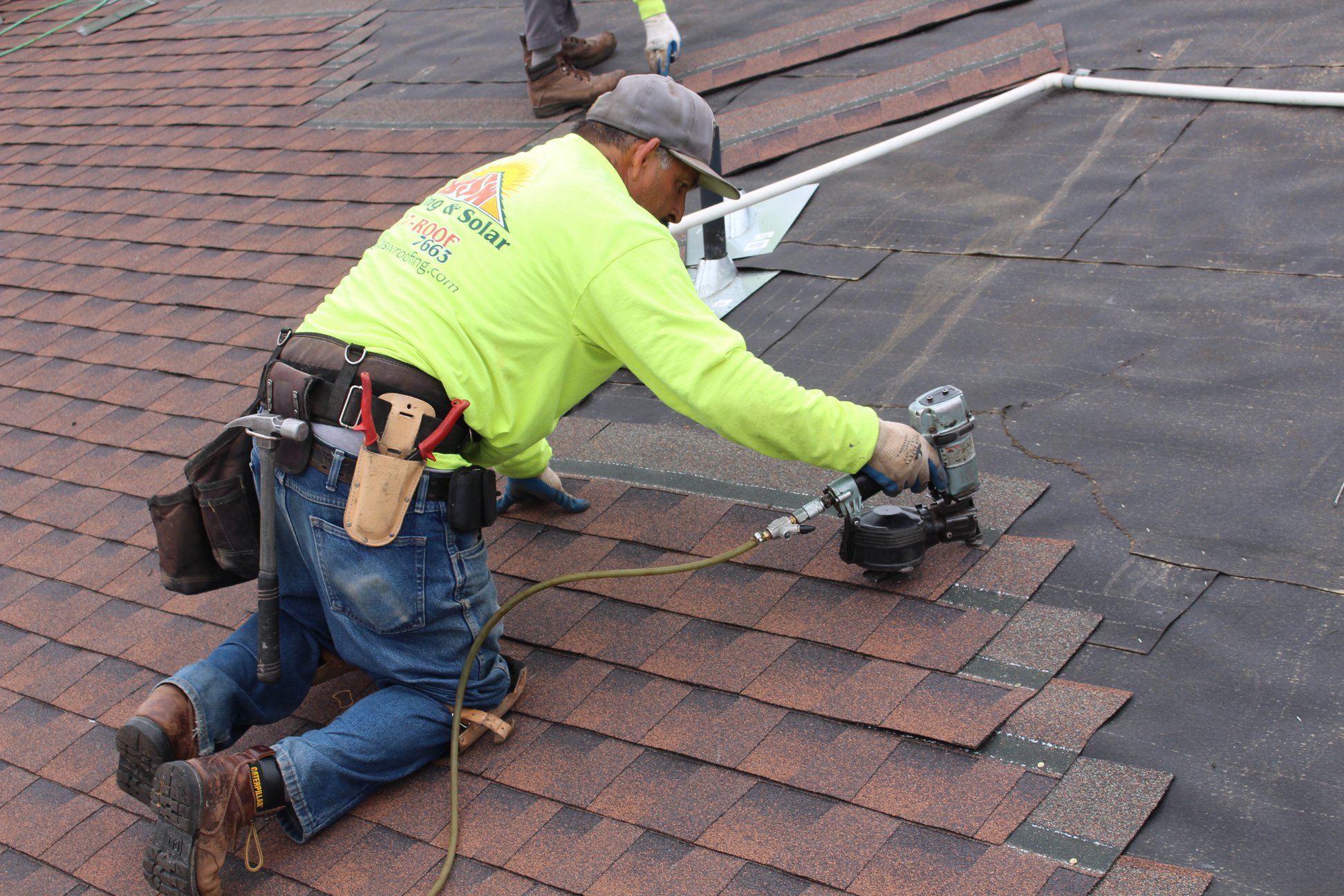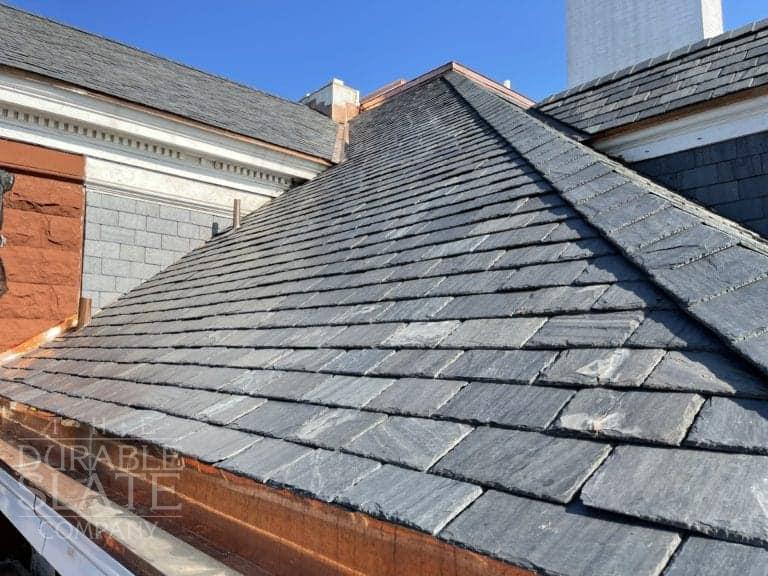Just How Gainesville Roofing Companies Can Transform Your Home's Outside
Just How Gainesville Roofing Companies Can Transform Your Home's Outside
Blog Article
Best Practices for Ensuring Proper Roof Ventilation
Making sure appropriate roof covering ventilation is critical for the longevity and efficiency of a roofing system. A balanced consumption and exhaust air vent proportion, generally 1:300, plays a pivotal duty, with consumption vents preferably placed at the lower edge of the roof covering for cool air entry and exhaust vents at the peak for cozy air leave. Routine evaluations to identify obstructions and maintain clear airflow are paramount. Furthermore, keeping insulation far from vents is important to stop air movement restriction. Comprehending these fundamental elements establishes the phase for more comprehensive insights right into installment and maintenance techniques that can considerably improve your roof system's performance.
Understand Air Flow Basics
Effectively recognizing ventilation essentials is necessary for guaranteeing the durability and effectiveness of roof covering systems. Reliable air flow minimizes wetness buildup and temperature level extremes in the attic, both of which can lead to substantial structural damage over time. A well-ventilated roofing aids in protecting against usual issues such as mold and mildew growth, wood rot, and ice dams, which can compromise the stability of the roof covering materials and the underlying structures.
The key goal of air flow is to facilitate the motion of air, permitting a constant exchange in between the outdoor and indoor atmospheres. This equilibrium is accomplished via a combination of consumption and exhaust vents that interact to maintain optimal air flow. Intake vents, commonly situated along the eaves or soffits, permit fresh air to enter the attic area, while exhaust vents, frequently located at or near the roofing system ridge, enable warm, moist air to escape.
Key variables influencing the efficiency of roofing system air flow include appropriate positioning, sufficient sizing, and guaranteeing that both consumption and exhaust vents are unblocked. Routine examination and upkeep are critical to identify prospective obstructions, damage, or inadequacies in the air flow system, therefore guarding the roofing system's efficiency and longevity.
Sorts Of Roof Vents
Roofing vents play a crucial duty in keeping effective attic room air flow and, by expansion, the total health and wellness of the roof. Various kinds of roof covering vents are offered, each with one-of-a-kind advantages customized to certain roofing demands. Ridge vents, for instance, are set up along the roofing system's peak, enabling cozy, damp air to escape from the attic room. They supply continual air flow and mix effortlessly with the roofline, making them both reliable and visually pleasing.

Soffit vents are mounted under the eaves and operate in tandem with roofing system vents to guarantee a balanced intake and exhaust system. By permitting cooler air to get in from below, soffit vents help with the expulsion of warm air with upper vents. Gable vents, located on the outside wall surfaces of the attic, deal another efficient remedy, particularly in homes with gable roofings.
Analyze Your Current Ventilation

Following, take into consideration the age and condition of your roofing materials and ventilation parts. Older systems might not abide with existing building ordinance or might have weakened with time, reducing their performance. Conduct a complete assessment to identify any type of indications of damage, such as rust, damage, or voids that could endanger the system's efficiency.
Additionally, gauge the attic temperature level and humidity levels. High temperatures and humidity can suggest inadequate air flow.
Setup Best Practices
Reliable installment of roof covering ventilation systems is paramount for guaranteeing optimum performance and longevity. Appropriate setup starts with recognizing the details air flow needs of the structure and the roof it covers. This entails calculating the correct proportion of consumption to wear down vents, commonly adhering to the 1:300 policy, which specifies one square foot of air flow for every single 300 square feet of attic flooring room.

Consumption vents need to be set up at the roof covering's lower side, typically in the soffits, to permit cool air to enter. Exhaust vents, on the other hand, ought to be installed near or at the roof's height to help with the leave of warm, wet air.
Seal all vent connections carefully to stop air leaks and possible check this water seepage. Use top notch materials and adhere to producer standards to make certain toughness and effectiveness. In addition, integrating ridge vents with baffles can dramatically improve air flow efficiency by protecting against wind-driven rainfall and snow from getting in the attic.
Ultimately, specific installment of roof covering ventilation systems reduces prospective concerns such as mold growth, ice dams, and architectural damages, guaranteeing the roof covering's integrity and the building's general wellness.
Regular Upkeep Tips
Consistency in maintenance methods is basic to ensuring the lasting performance of roofing air flow systems. During these evaluations, guarantee that vents are complimentary of debris, nests, and other obstructions that might impede air flow.
Cleansing the vents is an additional necessary job. Use a soft brush or a vacuum to get rid of dirt and debris from intake and exhaust vents. Be cautious not to harm the air vent displays or louvers throughout the process. Furthermore, evaluate the attic room area for any kind of indicators of water damages, which might endanger the stability of the roof system.
Appropriate insulation is just as crucial. Make certain that attic room insulation does not obstruct the vents, as this can significantly restrict air movement. If any insulation has moved or worked out, rearrange or replace it to preserve an effective obstacle.
Finally, replace any kind of harmed or missing parts immediately. Damaged vents, fractured tiles, or scrubby blinking can all add to poor air flow and needs to be resolved immediately. Routine maintenance ensures that the roofing air flow system functions optimally, therefore prolonging the lifespan of the roof itself.
Verdict
Making certain correct roof air flow is paramount for maintaining the effectiveness and durability of a roof covering system. Adherence to the 1:300 consumption and exhaust vent ratio, coupled with the strategic positioning of vents, is necessary. Normal biannual evaluations, debris cleansing, and making sure insulation does not obstruct air movement are important practices. Implementing these ideal practices will certainly promote a well-ventilated roof, thus reducing possible problems associated with moisture accumulation and excessive warmth, ultimately prolonging the roofing's lifespan.
A balanced intake and exhaust air vent ratio, commonly 1:300, plays an essential duty, with consumption vents preferably placed at the lower edge of the roofing for cool air entrance and exhaust vents at the peak for warm air exit. Consumption vents, generally located along the soffits or eaves, enable fresh air to enter the attic room, while exhaust vents, frequently positioned at or near the roof ridge, enable hot, click here to find out more damp air to get away.
Soffit vents are installed under the eaves and job in tandem with roofing system vents to guarantee a well balanced consumption and exhaust view system. By allowing cooler air to go into from below, soffit vents facilitate the expulsion of warm air via upper vents. Adherence to the 1:300 intake and exhaust vent proportion, paired with the strategic positioning of vents, is essential.
Report this page